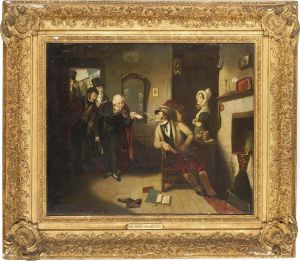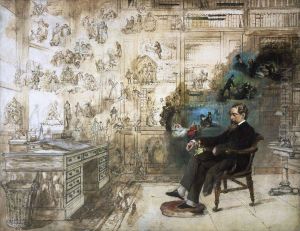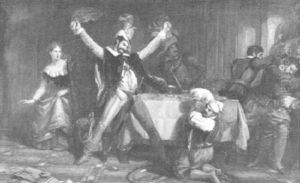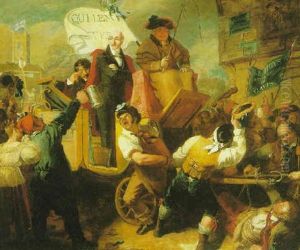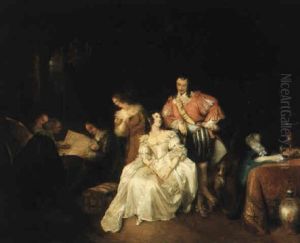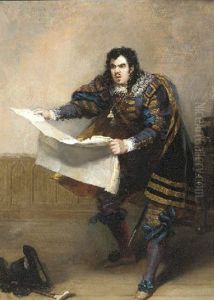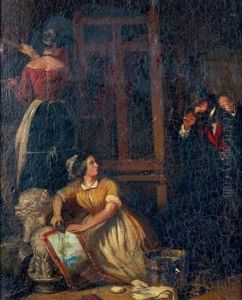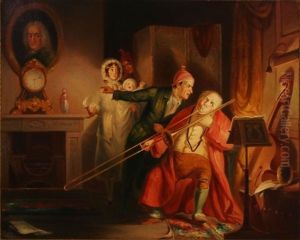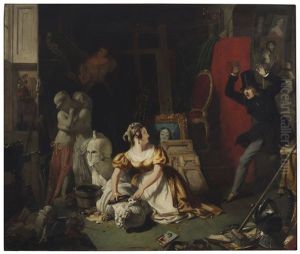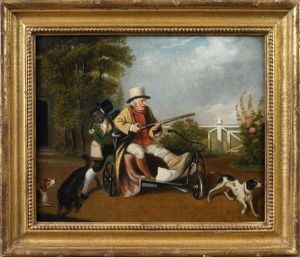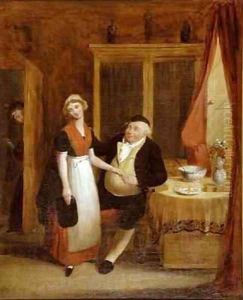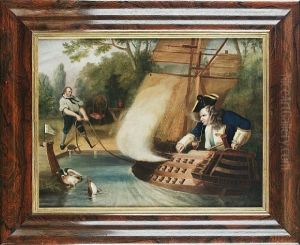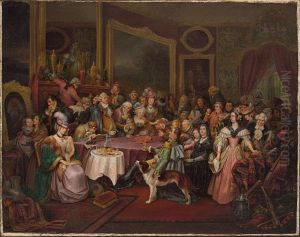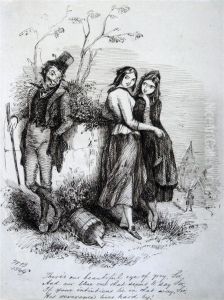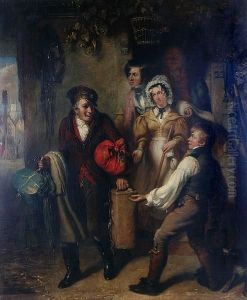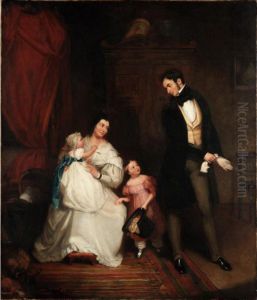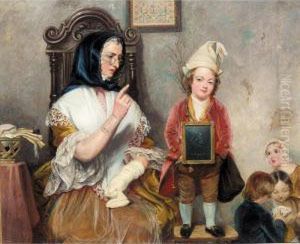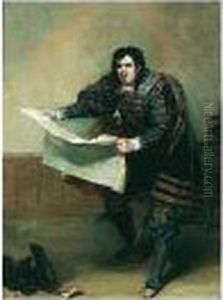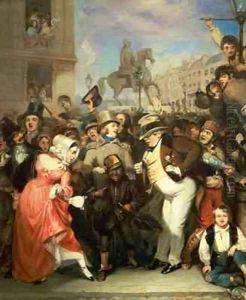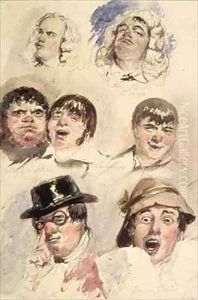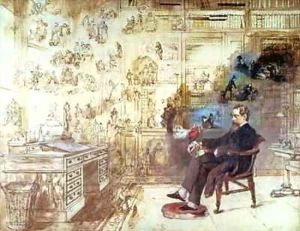Robert William Buss Paintings
Robert William Buss was an English painter and illustrator, born in London in 1804. Best known for his genre paintings, which vividly depicted scenes from daily life, Buss also made significant contributions as an illustrator, particularly in the realm of book illustration. His career, while not as celebrated as some of his contemporaries, showcases a dedicated engagement with the Victorian art scene and an enduring interest in capturing the nuances of human character and social interaction.
Buss received his artistic education in the vibrant milieu of early 19th century London, a time when the city was burgeoning with new artistic societies, galleries, and a public increasingly interested in the visual arts. Despite the lack of a formal art school education, Buss was largely self-taught, gleaning knowledge from the art and artists that surrounded him. His early career was marked by a focus on miniature painting, but he gradually shifted towards genre painting, drawn by its potential to tell stories and explore the character of his subjects.
One of Buss's most notable works is 'The Dickens' Dream,' an unfinished painting that shows the celebrated author Charles Dickens surrounded by characters from his novels. Although Buss did not live to complete the painting, it stands as a testament to his imaginative vision and his respect for Dickens's work, with whom he shared a contemporary audience. This piece, alongside his illustrations for publications, demonstrates Buss's keen eye for detail and his ability to translate narrative into visual form.
Throughout his career, Buss also engaged with the technological and social changes of his time. He was interested in the developments in printing technology, particularly lithography, which allowed for broader distribution of his and others' works. His illustrations appeared in various periodicals and books, contributing to the popular visual culture of the Victorian era.
Buss's dedication to his craft and his ability to capture the essence of Victorian life did not always translate into financial success during his lifetime. Despite this, he was an active member of the artistic community, participating in exhibitions and striving to improve the status and conditions for artists in Britain.
Robert William Buss passed away in 1875, leaving behind a body of work that, while perhaps not as widely recognized as that of some of his peers, offers insightful commentary on the society and culture of his time. His paintings and illustrations remain valuable for their historical significance and their portrayal of Victorian life and literature.
